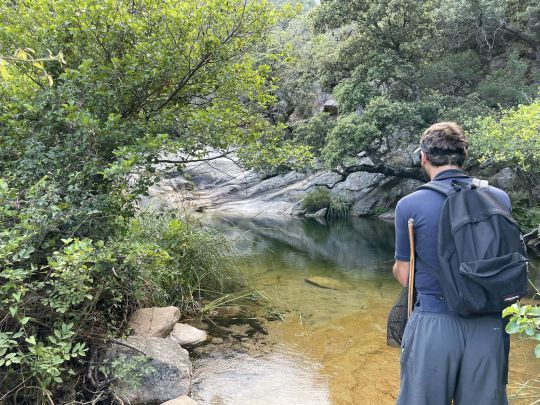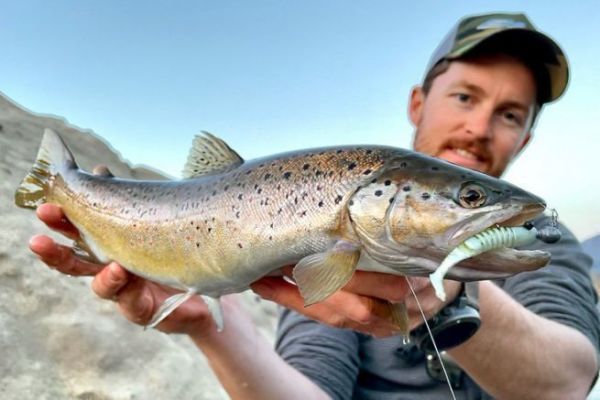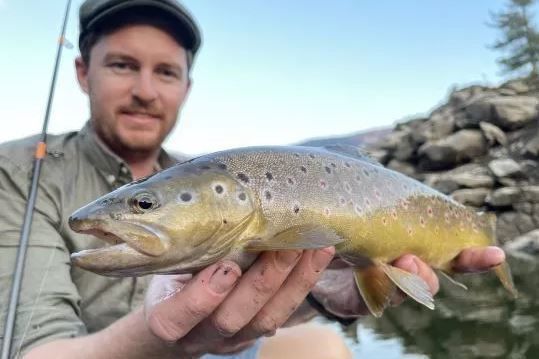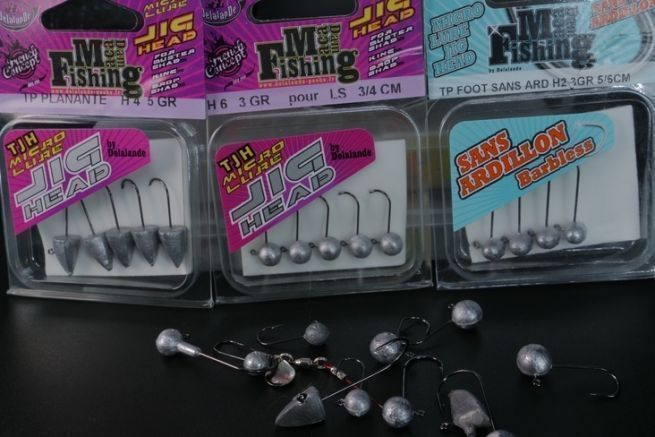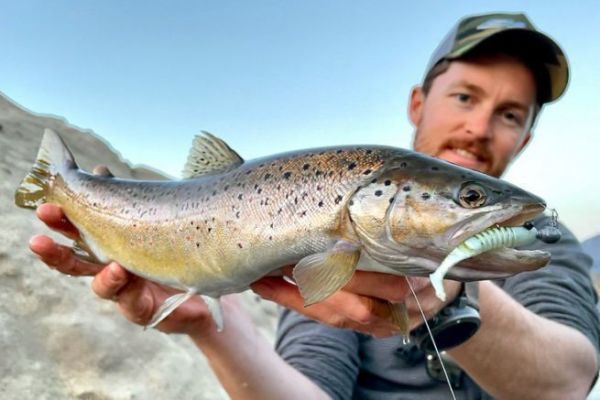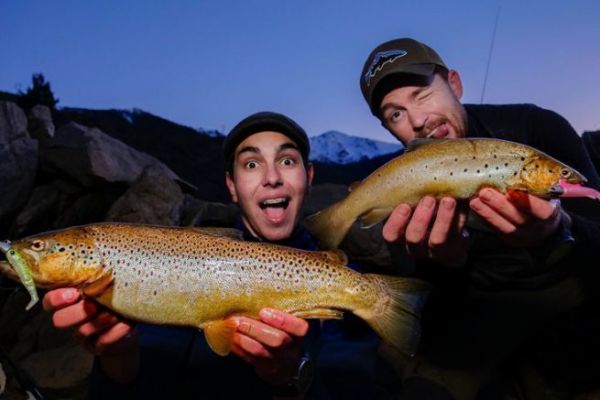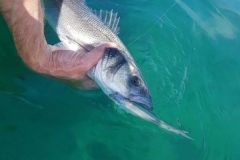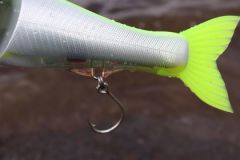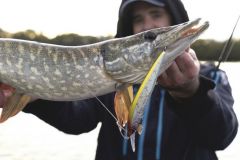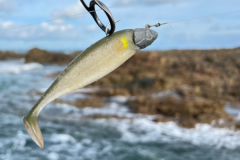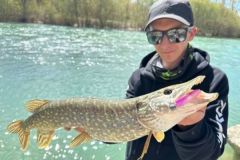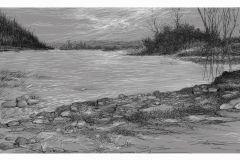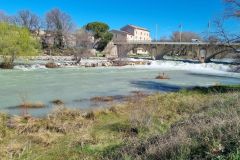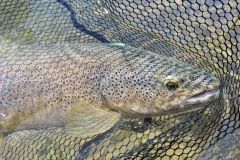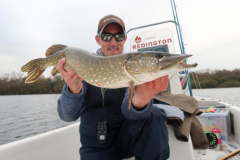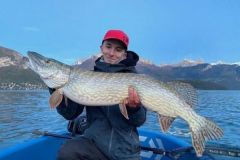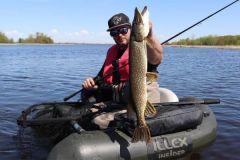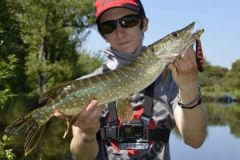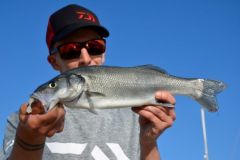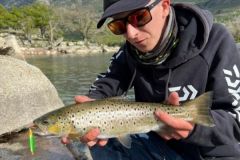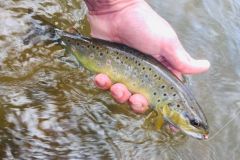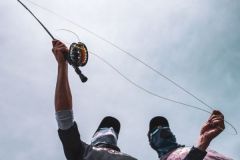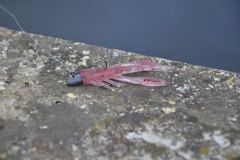Simple linear and recovery speed
The simplest and most practiced animation is undoubtedly the linear fishing. This technique consists of casting the lure and retrieving it continuously without changing the orientation or the height of the rod.
The soft lure then imparts a natural swimming action like a fish moving quietly through the same layer of water. This animation is very simple when practiced in calm waters, like lakes or holes without current in rivers. However, it can also be practiced on spots where the current is stronger. For this, it will be necessary to throw its lure ¾ upstream in order to be able to keep a control on the banner and thus recover slightly faster than the speed of the current.
This type of line is very effective, because it allows to sweep a lot of ground and the hits are generally very violent. Indeed, the trout sees its prey going down the current so it seizes it frankly and turns over immediately to set out again upstream!
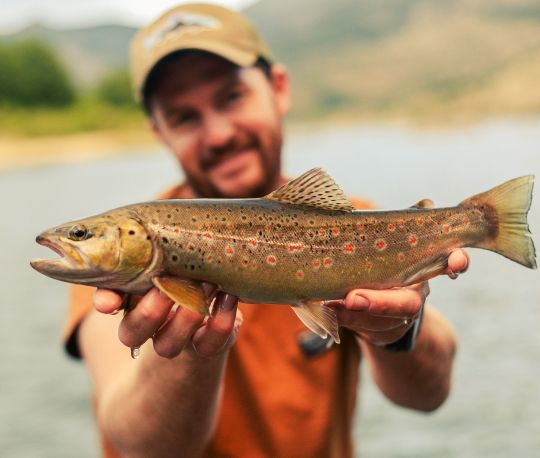
Sawtooth fishing
In the same spirit as line fishing, it is possible to practice a fishing called "sawtooth". This animation consists in making the lure go up and down above the bottom, fast enough for trout fishing so that it crosses different layers of water! In a lake, or a calm area, the lure must make contact with the bottom, and during the retrieve, small and ample pulls must be given with the rod, from bottom to top.
This animation allows to imitate a prey that, in turn, would come up from the bottom to feed, then would go back down to land. This is a great animation when trout are focused on species living near the bottom, like gobies for example.
Fishing to darter
The purpose of the darter fishing is to imitate a wounded fish, or in escape, by giving the lure a very erratic swim.
The use of triangular shaped heads is essential to give a maximum of amplitude to the animations during the small blows of scions. Once the lure is lowered in the desired water layer, it is necessary, while continuing the recovery, to give small short and rather dry blows of scions in a regular way. The lure will then move from right to left in the water layer, like a stickbait on the surface. This animation triggers a certain aggressiveness of the trout and generally allows quality hits!
It is possible to interrupt this animation by a small pause of a few seconds after having carried out a dozen "dart". This sudden change sometimes triggers attacks from trout who then think that the prey is injured or dead and come to seize it before it descends too much in the water layer.
In a stream, it is possible to practice a fairly fast animation also with small soft lures. The idea is to cast full upstream or ¾ upstream and to bring back quite quickly by putting very small blows of scions very fast to make the lure wriggle. This animation is practiced rod high if the environment is not too crowded, it is then advisable to over-light his lure slightly to avoid that it passes too close to the surface!
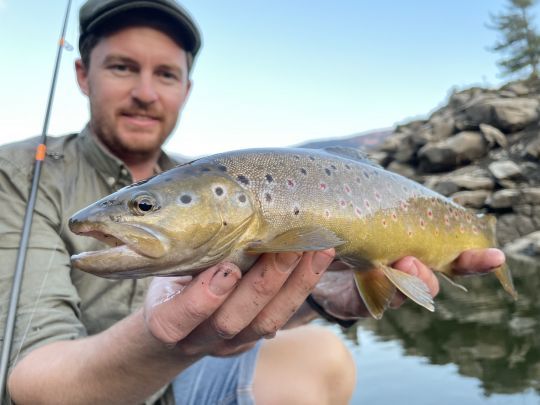
Drift fishing
This last animation, modelled on natural bait fishing or fly fishing techniques, consists in making the lure pass through a water vein as naturally as possible, at the speed of the current.
The lead is then the most important element to allow the lure to stay in the water vein. Although it is more logical to practice it with a lure imitating an insect, this technique is also very effective with a small shad or finess, acting then as an easy prey to seize which is carried away by the current.
To practice this type of fishing, it is possible to mount the lure on a leaded head, but also and especially to use a type of fishing with toc. The lure is put on a single hook and some sinkers are fixed about 20 cm above. This rig offers a great freedom of movement to the lure and guarantees a natural presentation, ideal when the trout are not very active on other types of animations and they want something very natural.
